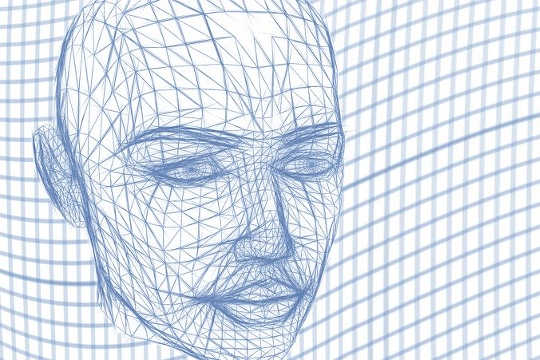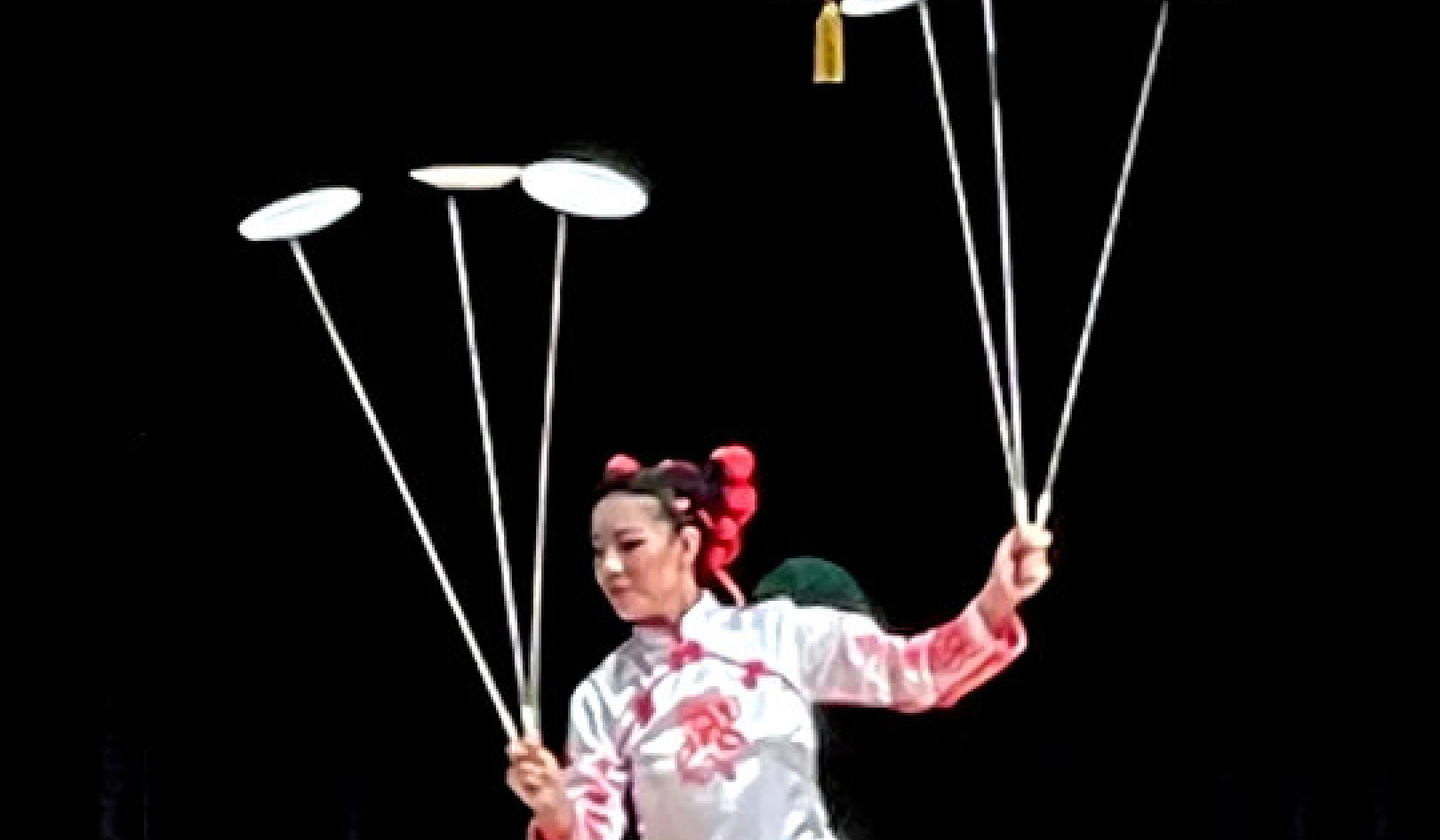
Image by Gerd Altmann
“Man’s ordinary state of consciousness, his so-called waking state,
is not the highest level of consciousness of which he is capable.
In fact, this state is so far from real awakening that it could
appropriately be called a form of waking sleep.”
~ Robert De Ropp in The Master Game
Seeing beyond the illusion of what we call the “real” world is not easy. It hasn’t been for more than a hundred years, a century that featured solid scientific research. It takes work and discipline.
Pinch yourself, for instance, and your body seems solid. Your senses insist this is the case. It seems to be an essential, irrevocable truth. But the plain facts of science, regardless of what normally seems so patently obvious, prove that your senses are deceiving you.
You are not solid. You are a churning, seething, bundle of energy. Subatomic particles within your body and your surroundings are zooming in and out of material existence, some surviving for only a matter of seconds or less before disappearing and being replaced. Cells are forming, reproducing and sloughing off your skin. Internal organs are performing their functions without your knowledge or overt consent.
Despite your feelings of permanence, you are on a journey that eventually leads to old age and death. That’s called life, and there is simply no denying it.
But wait! There’s more! The entity that you call “you” is a mass of perpetual motion, no matter how peaceful and still you may feel.
You Inhabit A Galaxy Hurtling Through Space
You inhabit a galaxy that is hurtling through space, while standing on a planet that is orbiting the sun and revolving on its axis at the same time. What this means is that if you are an average reader, in the time it took you to read this paragraph, given the fact that you are rushing along through space at 530 miles (853 kilometers) per second, you are now more than 8,000 miles (12,875 kilometers) away from the point you were when you began reading.
Given that reality, maybe it’s time to rethink the whole idea of what it is and what it means to be alive and conscious. If we can’t trust a point of view that seems to be centered within us, maybe it’s time to visualize a new perspective—one that better conforms to these physical facts we know to be true.
The whole conception of a non-material “you,” whether we call it consciousness, soul, essence, or ego, that resides in a body or brain, is obsolete. It’s not wrong. It’s simply insufficient.
We refer to this essence when we say “my brain” or “my body” or “my foot.” Where does the one who says “my” reside? What part of the body houses your “my?” Is there an essential organ or structure that is indispensable to the “I” who says “my?”
We used to say it was the heart. When the heart stopped beating, life ceased. Then we learned how to keep people alive with artificial hearts.
We once said it lived in the brain. But then we learned how to keep people alive even after they were pronounced “brain-dead.
A Brief History
Early in the twentieth century Albert Einstein demonstrated to a handful of physicists that time and space, the very cornerstones of what we experience as the “real” world, are not fixed, stable entities. Up until then everyone assumed that the one thing we could count on, aside from death and taxes, was that a minute was always a minute and a mile always a mile.
“Minute” and “mile,” or kilometer, were words we used to identify how much time had passed and how far we had traveled. They may be earth-bound measurements, but anyone, anywhere in the galaxy or the universe, who agreed to use those arbitrary measurements, could understand exactly how much time had passed or exactly how far something had traveled.
Then along came Einstein, who taught us that both distance and duration were relative to the local situation of the observer.
It gets worse. In 1919 a scientist by the name of Ernest Rutherford split an atom. Ever since the time of the Greeks, atoms had been thought to be the building blocks of everything. There was nothing smaller than an atom. But when Rutherford split an electron off from an oxygen atom he proved that what had previously been considered to be the building block of all nature was, in fact, made up of smaller particles.
Where was this going to end? Was nothing sacred?
As it turns out—no.
The Uncertainty Principle
Werner Heisenberg soon developed his uncertainty principle. He answered the question “What is light?” with a multiple choice. It was either a wave or a particle, depending on how you chose to measure it. What an idea! A scientist could now determine the properties of light, depending on how he decided to look at it. He could choose! And his choice determined the outcome as much as anything inherent in light itself.
Paul Dirac, Erwin Schrödinger, and others went on to prove again and again to those who were curious enough to follow their theories, that how we perceive the universe is, in fact, an illusion.
There were many educated people who heard these theories, scoffed at them, and said, “I know what I see! I know what I experience! These guys are just pie-in-the-sky talkers who have no practical sense at all!”
According to everyday principles, the scoffers were exactly right. If you drop a brick on your foot, it hurts. No amount of lecturing by a physicist, who tells you the brick and your foot are only perceived realities, is going to take away the pain. A tangible aspirin works much better.
But on another level, a strictly scientific one, Einstein, Heisenberg, Dirac, and Schrödinger were right. And they were only the tip of the iceberg. In 1916, Bertrand Russell and Alfred North Whitehead set out to prove that mathematical systems were purely logical. They couldn’t do it. Instead Kurt Gödel, in 1931, proved that no system of mathematics could be proven by its own, or any other, set of rules.
Even Russell’s colleague at Cambridge, Ludwig Wittgenstein, seemed to conspire against him. Wittgenstein insisted that language itself was not to be trusted. He believed that “logical” descriptions of “real” situations were misguided at best, and possibly even outright deceptions. Together, all these folks concluded that we cannot simply look at the world, describe what we see, and arrive at conclusions as to what it really is. Everything is subjective. Everything is relative. It all depends on context—who we are, where we are, and what we see.
There Is More To Life Than What We Perceive
In short, given the state of modern science and the traditions of religious thought we have inherited, it now appears certain that there is more to life than that which we perceive with our senses. There are unseen worlds that influence our perception of reality. What’s more, they actually form it! And although we cannot observe those worlds with the microscopes and telescopes now available, we can explore them when we learn to bypass our five senses and move out and away from the body they define and regulate.
There are still many people who will read these words and say, “I know what I see!” No one will ever convince them that they have bought into the illusion. Such is its power over us. How strange it is that truth itself appears as a magical mirage.
But for thousands of years there have been those who saw through the illusion even though they had no way of quantifying their insights. By examining their dreams and visions, through carefully controlled and disciplined intuitive exercises, and by following the experiential threads of mystic inward journeys, they arrived at the conclusion that there are other worlds out there, awaiting exploration.
These worlds can appear downright strange at times when we try to describe them using language that was invented to explain things with which we are all familiar. After all, they are totally outside our experience. We can’t come back from such a journey and say, “This is what I saw!” The best we can say is, “What I saw looked something like this!”
Take this example from my journal, for instance. The experience happened many years ago but still seems as vivid as the day I wrote about it:
November 2, 2012
I wake up just before 3:30 and, with a lot of mental reservations, decide to meditate. (It’s cold outside the covers!) I go into the living room, sit in the chair I use for meditation, and turn on some soft music. . .
I affirm to myself that I am more than my body. I try to keep all external thoughts at bay. That doesn’t work, of course, so I mentally step outside myself and become the Watcher, who simply observes the person who is doing all this frantic thinking.
With that simple step, everything changes. I see my body in the chair as a separate entity, a vehicle for consciousness. But I am outside. What does the Watcher look like? I don’t have the slightest idea. I can describe my body in the chair. But that’s all.
What happens next is very difficult to describe. . .
I am covered with a piece of something that looks like cardboard. Maybe I’m in a box. But the cardboard is easily removed, perhaps with some help from someone else. I’m not certain. Then confusion. I ask for clarity. Then I take off.
Soaring—flying free—twisting and turning—tumbling—freedom—joy.
At one point I seem to approach a defining horizon. Above is light. Pure light. Not even light, really, just blazing whiteness. Below is darkness. But the darkness is dotted with pinpricks of light. It seems to be the universe. For a moment, an immense being, I think it’s me, holds the darkness in his hand. He is smiling. I feel that he could enter that universe at any time and at any place, with just a thought. Then he holds, not the universe, but an old fashioned cigar box. This, too, contains something, but I don’t know what it might be. Perhaps it is the universe. Perhaps just my body. But he kneels as he studies it intently.
Next I see pillars of light either supporting or being drawn towards the light. One of them is rooted at some earthly vortex. Another seems to come from the Medicine Wheel I recently built in a valley below our house. There are many more. They form some kind of structure that reaches towards the world of light. It’s as if they form great pillars that support the sky—Stonehenge on steroids or Disney gone berserk. But maybe they simply connect the two worlds. I don’t know.
How can an image so incredibly visual and real be so hard to describe with words?
By now an hour has gone by and the CD music starts over for the third time. I am conscious of the fact that I can stay out longer if I wish. But somehow I am too full of images and pictures. It’s time to return. So I do.
Meanings
I have no idea what happened during that hour of meditation. I don’t know if it contained some sort of message or not. It felt as though it did, but if so, the message eludes me to this day, many years later.
I am fully aware that it might have been a kind of lucid dream, a freedom-wish fantasy from my subconscious. After all, I’d been wrapped up in the usual worldly cycle of tasks that consume us all. Good things. Practical things. But I often feel that such a mind-set cuts us off from Spirit.
There are reasons mystics go out in the deserts or up on mountain tops to get away from humdrum necessities. As important as these daily tasks seem, and they are important, they are trivial compared with the real work of Reality. After all, if I am that Being who’s “got the whole world in his hands,” the choice of what color to paint the kitchen cabinets is really not very important.
So whether it was a lucid dream, fantasy, or Out-of-Body Experience (OBE), that makes at least the basic message easy to decipher.
“I am more than my body!”
Amen to that!
©2019 by Jim Willis. All Rights Reserved.
Excerpted from the book: The Quantum Akashic Field.
Publisher: Findhorn Press, a divn. of Inner Traditions Intl.
Article Source
The Quantum Akashic Field: A Guide to Out-of-Body Experiences for the Astral Traveler
by Jim Willis Detailing a step-by-step process centered on safe, simple meditative techniques, Willis shows how to bypass the filters of your five senses while still fully awake and aware and engage in extrasensory, out-of-body travel. Sharing his journey to connect with universal consciousness and navigate the quantum landscape of the Akashic Field, he reveals how conscious OBEs allow you to penetrate beyond normal waking perception into the realm of quantum perception.
Detailing a step-by-step process centered on safe, simple meditative techniques, Willis shows how to bypass the filters of your five senses while still fully awake and aware and engage in extrasensory, out-of-body travel. Sharing his journey to connect with universal consciousness and navigate the quantum landscape of the Akashic Field, he reveals how conscious OBEs allow you to penetrate beyond normal waking perception into the realm of quantum perception.
For more info, or to order this book, click here. (Also available as an Audiobook and a Kindle edition.)
About the Author
 Jim Willis is the author of more than 10 books on religion and spirituality in the 21st century, including Supernatural Gods, along with many magazine articles on topics ranging from earth energies to ancient civilizations. He has been an ordained minister for over forty years while working part-time as a carpenter, musician, radio host, arts council director, and adjunct college professor in the fields of world religions and instrumental music. Visit his website at JimWillis.net/
Jim Willis is the author of more than 10 books on religion and spirituality in the 21st century, including Supernatural Gods, along with many magazine articles on topics ranging from earth energies to ancient civilizations. He has been an ordained minister for over forty years while working part-time as a carpenter, musician, radio host, arts council director, and adjunct college professor in the fields of world religions and instrumental music. Visit his website at JimWillis.net/
























